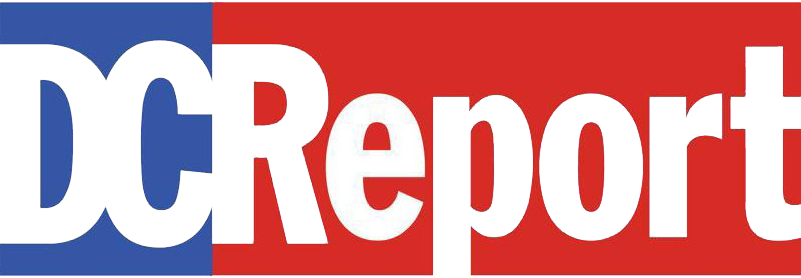They Turned the Bailout Plan into a Brand-Building Marketing Tool and Threw Money at Their Biggest Corporate Customers
Practically everyone’s looking for a bailout in the wake of the COVID-19 pandemic and the financial havoc that resulted largely from closing the economy.
But here’s the awful truth: Thousands of small businesses never had a chance at the Paycheck Protection Program, or PPP, money that was supposed to be their life preserver. And since Congress added to the PPP pot, public companies have continued to collectively get hundreds of millions more.
Those smaller firms and their workers are suffering—and even running the risk of going under. According to a poll by the U.S. Chamber of Commerce and MetLife, 22% of small businesses are two months or less away from permanent closure.
Twenty-two percent of small businesses are two months or less away from permanent closure.
This was no accident. Here’s what happened.
Big businesses—airlines, cruise lines, hotel chains, casinos, shopping malls and more—all lined up with their lobbyists for a huge helping of federal money. Then small businesses and the people who realize how important they are because they provide close to half of all jobs wanted to know what would happen to them.
Instead of Unemployment Checks
Congress gave in and created programs for these small businesses—in particular PPP. These are loans that were supposed to support strapped and hurting companies with fewer than 500 employees so they could keep paying the workers, reducing the need for unemployment benefits.
For the big banks, that first big round of money, eventually followed by more when the bungling turned public, became a great marketing tool. It helped those financial institutions cement relationships with their most important customers. Dibs on the dough, filtered through the discretion of big banks, went to those least in need. Among them was a lucrative professional basketball franchise, an exclusive homeowner’s association and hundreds of public companies.
This sort of insider favoritism, applied to the misuse of emergency funds, is what we’ve come to expect. Donald Trump used multiple signing statements to wave away layers of oversight required by Congress—both Democrats and Republicans—in the authorizing bill. Trump’s actions are constitutionally dubious, but his written declarations that he’ll ignore congressional intent puts the onus on the House and Senate to seek presidential compliance. So far, their record of success has been as poor as some of the relief recipients are rich.
Lost Opportunities
Opportunities to save small businesses have been frittered away. CNN reported on a Washington, D.C., bakery that needed $23,000 to finish an 11,000-cake lifeline order from a grocery store chain. But there was no money left to borrow. The small business relief funds were exhausted—in significant part by big businesses requesting and getting millions each—and instead of survival, the owner had to lay off three employees.
Self-employed people, like an Ohio couple who own a small trucking company, were forced to wait a week after funds were available before being allowed to apply. That’s a financial death sentence in a first-come, first-served program. “We’re basically getting ready to lose everything,” co-owner Trish Pugh told NPR. “It’s really sad because we did this all on our own at first.”
For actual small businesses, the process was opaque and confusing. Software entrepreneur Laurence Kotlikoff detailed his experiences at Forbes.com—a tale that would be farcical if it weren’t so dire for his business. In addition to his success in business, Kotlikoff is also a wicked smart Boston University economist.
All About Banks’ Marketing
To understand what happened, it helps to remember that there are two major types of marketing.
One is transactional: A company sells a product or service to a business, consumer or government.
The other is branding. The company wants to attract prospects and improve relationships with important customers, which can open new opportunities to profits.
Repeat customers are generally the most profitable. Persuade them to spend more and profits grow because the business avoids hefty costs of acquiring new customers.
For banks, the best customers are large companies and wealthy people who borrow money, whether out of convenience or need, and are almost certain to pay it back. It’s the safest way to profit from the interest and loan fees.
That rule of thumb has flexibility, as when Deutsche Bank continued to back Donald Trump, even as one business venture trembled or shook after another, as The New York Times Magazine reported. Deutsche Bank recently refused to provide information to Democratic senators about its dealings with Trump, according to German broadcaster Deutsche Welle.
Preferred Customers First
In an irony of the PPP loan program, banks have made out like bandits by giving preference and precedence to processing loans to existing customers. If you were part of a group historically ignored by banks, like many minority-owned enterprises, the chances of getting help were even slimmer, noted Mother Jones.
The marketing windfall for banks started with the congressional creation of the PPP loan program, intended for small firms, but enabling the creep of big company favoritism from the start. Congress allowed restaurant, retail and hotel chains to artificially lower their employee count by applying for loans as individual locations, not a single overall company.
The green flag being waved, the race was on. Those taking the lead in getting money were not just the chains, but other types of publicly traded firms—ones with access to the public capital markets and which can typically get the best deals on borrowing.
Money on the Rebound
Analysis by FactSquared, which uses artificial intelligence to scan through Securities and Exchange corporate filings that mention the PPP program, showed at the end of April that 244 public companies received almost $896 million, for an average of almost $3.7 million per business. FactSquared also noted that 15 loans totaling $116.9 million were awarded but then returned or not completed.
Then, as Congress added more funds, the spree continued. As of the records FactSquared had of May 13, the total approved loan value to 407 public companies was more than $1.3 billion, for an average of more than $3.2 million each. Even accounting for public companies that ultimately declined the money they asked for and were offered, or which they returned, it was still $904.4 million, or better than $2.6 million apiece.
L.A. Lakers and Rich Homeowners
It wasn’t just public companies that got deals. The Washington Post revealed that the Los Angeles Lakers received a $4.6 million PPP loan, after which team owners said they would return the funds. Call it money on the rebound.
A housing association in what NBC News called the richest zip code in the United States, the Fisher Island Community Association, was approved for $2 million although it had “no layoffs and no apparent financial impact from the coronavirus pandemic.” The residents agreed to turn down the loan. How understanding.
Not that the Lakers and Fisher Island homeowners, or all the returns from public corporations, help the small businesses that needed money. Even with the additional funds, there’s a cap on the total amount of loans available.
A small company that desperately needed money and got crowded out by a prosperous corporation may qualify for a loan but too late to survive.
The additional money from Congress, in these tough times, is the business equivalent of healthcare intervention for people. A delayed course of treatment may no longer matter in fighting for survival, as the death of Muppets creator Jim Henson taught us three decades ago.
Shortly after information about the rampant abuses became public, the Treasury Department issued a document explaining that applying businesses “must certify in good faith that their PPP loan request is necessary” and “that ‘[c]urrent economic uncertainty makes this loan request necessary to support the ongoing operations of the Applicant.'” That was supposed to include the ability to get financing elsewhere. Like all those public companies that received loans after the document was published.
Previous Banking Relationships
Banks were all for keeping their current favorites happy, though. Bank of America, for example, made clear from the beginning that it wanted to hear from businesses that already had a relationship with it. That qualification is still up at the bank website for the second round of PPP lending funds made available by Congress:
You must have a Small Business lending and Small Business checking relationship with Bank of America as of February 15, 2020, or a Small Business checking account opened no later than February 15, 2020, and do not have a business credit or borrowing relationship with another bank. A Business Credit Card, line of credit or loan may be the lending product used.
Small businesses hit the roof, complaining on social media, to the press and even heading to the courts. Multiple lawsuits claim that Bank of America, Wells Fargo, JPMorgan Chase and US Bank failed to process applications in the order they arrived, instead favoring larger loans from bigger customers.
Such favored treatment is brand marketing from a bank’s point of view. It carries a second lucrative benefit. Because roughly the same amount of work goes into processing loans of any size, bigger loans mean more profit.
DCReport requested comments from all four banks. Wells Fargo said it had no comment on the lawsuits. U.S. Bank answered that reports claiming it “prioritized more wealthy clients in the funding of Paycheck Protection Program loans are absolutely not accurate.” Neither Bank of America nor JPMorgan Chase responded before publication.
More than $2 billion of the first PPP round was declined or returned, according to Small Business Administration administrator Jovita Carranza.
Still, it’s the thought—and each business relationship with the well-connected and wealthy—that count. With Congress having approved the additional $310 billion in PPP funding, public companies are still applying and getting money. As likely are other profitable existing customers that don’t have to publicly declare that they received a share.




